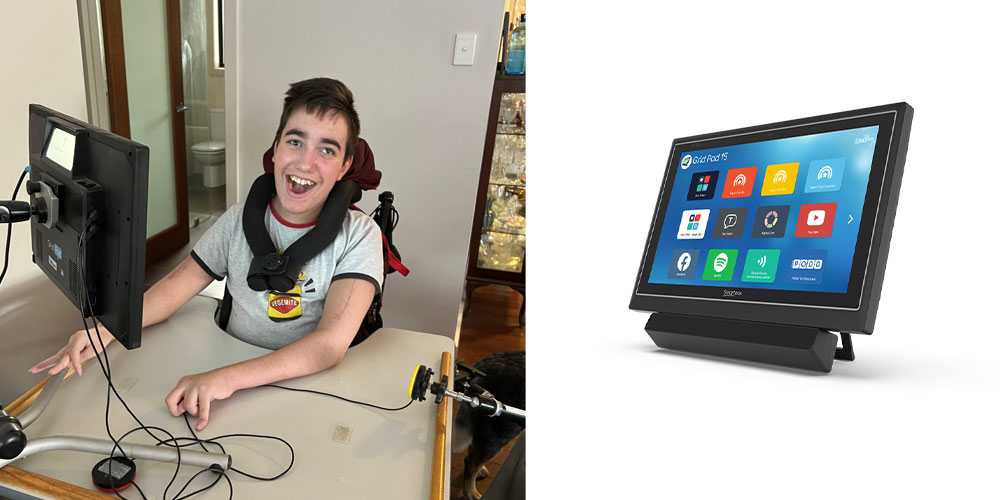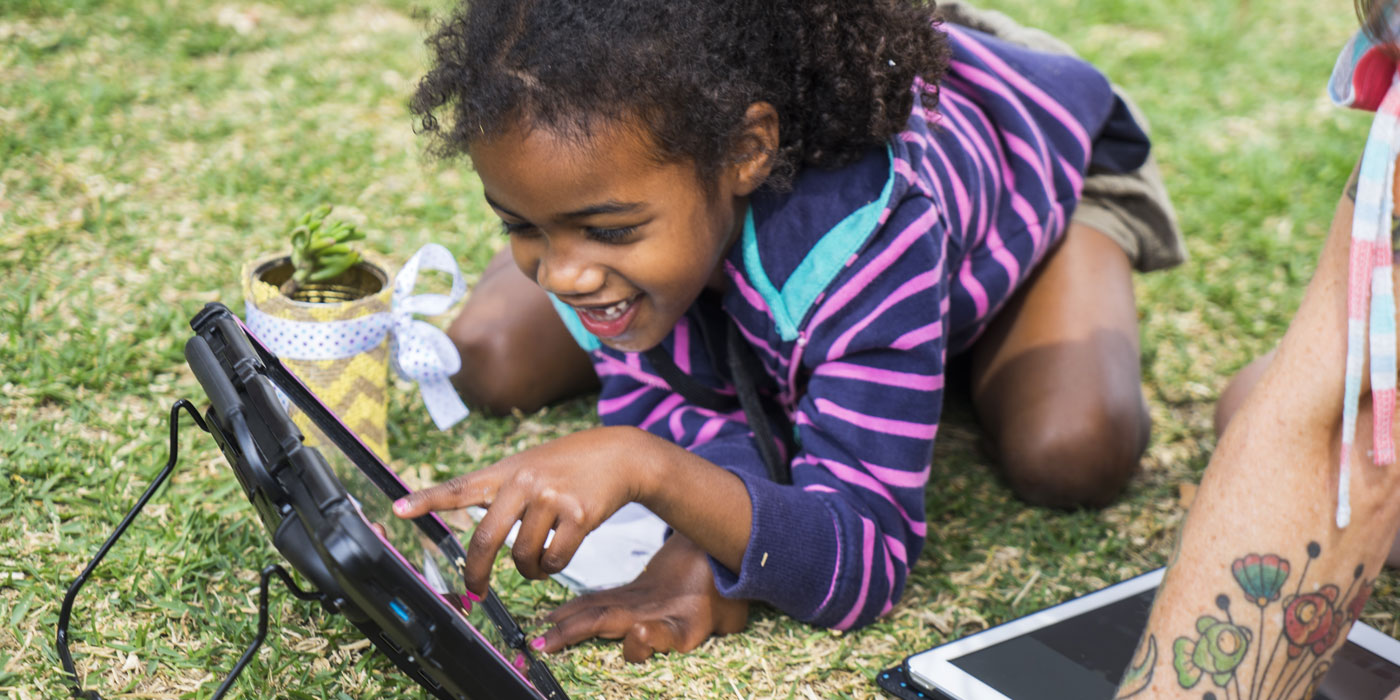In our recent Touchstone article, More than words can say, we looked at different ways people can use Augmentative and Alternative Communication (AAC) to communicate, and learned more about the Bunny the dog who has learned to use an AAC board to communicate with her owners.
For some people who can’t use touch to control an AAC, a ‘switch’ allows access to a screen with a specialised button that is connected to the device. It automatically scans the screen, highlighting various parts gradually. The user then presses a switch to select their choice for communicating their message. The settings on the device are personalised to the user to ensure that the speed of scanning is appropriate to their motor skills.

Two switches can also be connected, allowing a user to scan through the screen with one switch and make a selection with the other. Generally, a speech pathologist will work with an occupational therapist and the AAC user to determine if one, two, or no switches should be used.
According to Eamonn, who has been using an AAC since he was five years old, the Grid Pad 15 with a single switch from Zyteq supports him with self-advocacy and making decisions.
“It’s brilliant for choosing what I want for dinner,” Eamonn said.
“I like using Instagram to catch up with the celebrities, but Instagram is difficult to access on my device – I’m still learning how to do this.”
Eamonn also has advice for anyone thinking of accessing their device with switches.
“If you are thinking of using your device with switches, it would also be good to start using switches for power wheelchair access,” Eamonn added.
If you would like to learn more about AAC and/or Switches to enhance your independence, get in touch with CPL today to begin your Speech Therapy journey or call us on 1800 275 753.

